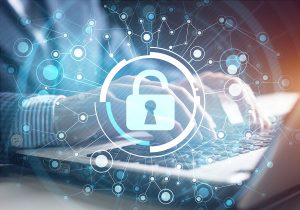 From time to time GovEvents will come across information we feel our members and audience would benefit from. Here's something we wanted to share:
From time to time GovEvents will come across information we feel our members and audience would benefit from. Here's something we wanted to share:
Airmen may see faster apps and a new way to learn about cyber and coding in the near future, according to the Air Force's deputy chief information officer.
The Air Force is preparing to invest in what it's calling Digital U, an online schoolhouse similar to Udemy or Codecademy that will let airmen learn basic cyber skills or challenge themselves to learn coding languages.
"Digital U is embedded in every single mission area if you're an HR professional or a logistician," Bill Marion, Air Force deputy CIO told Federal News Network in an interview. "We wanted to break the norm and truly democratize the training. This is where online and live media training can help you get to scale."
Marion said with about 700,000 active, reserve and guard airmen, giving them all cyber training in a classroom is not feasible.
Digital U uses commercial technology to bring training to airmen.
The training will cover everything from basic cyber hygiene to something as complex as making codes. The Air Force plans to gamify the training process, allowing airmen to level up and earn badges, to incentivize them to continue learning.
"We want them to be able to do advanced analytics and write a basic algorithm that goes against a dataset that they may know natively," Marion said. "If I'm a flight line technician, the tools can help me with fuel flow. How much money can we save by saving 1% of fuel when we are the world's largest fuel consumer? We can make some very significant moves by an airman knowing how to write a basic query on a dataset."
Marion said the Air Force hopes to eventually recruit, retain and even incentivize airmen with bonuses through Digital U.
The online classes let airmen take education into their own hands and learn as much as they want, even taking steps to becoming a data scientist.
The Air Force plans to contract the program out using other transaction authority (OTA) -- an acquisition method geared toward fast procurement with nontraditional defense companies.
"It's not just a one-size-fits-all," Marion said. "There's differing vendors in this space that provide everything from much lower point, but every entry-level training, to some vendors with a little higher price point, but more advanced training. The OTA is allowing us to look at how much we throttle on the lower end, the upper end and in the middle so we can scale at the 700,000 airmen level. It will not be a one-vendor thing based on our market research. It will be an ecosystem of tools."
Making apps faster
While the Air Force is priming its airmen for more digital engagement, it's also trying to make their current experience with the digital world less of a pain.
Marion admitted the way the Air Force goes about cybersecurity is redundant and slow.
"We've layered so much security that the user experience is down," he said. "We need to get that down to the right number of layers. There is security there that should be baked in there, but we've done it three, four, five times. I joke that once I've scanned for a social security number; I don't need to scan another time, another time and another time in the same transaction and we are doing that in some cases."
The Air Force is looking at the apps that its airmen use and testing how long it takes to access apps, and how many clicks it takes to complete an action.
For example, Amazon has one-click buying, something customers find convenient -- and possibly dangerous. Some airmen are finding they need to click 48 times to complete an action. Marion is looking into both the access and clicks issue.
Outside of that, the Air Force is moving more toward a zero-trust model -- that's where an organization never trusts a device connecting to a network and always requires verification.
Marion said that involves the Air Force retooling its applications inside a native cloud environment.
"We've done that with a couple dozen applications, we've got a ways to go with others," Marion said.
The education, cybersecurity and ease of use are all part of the service's Digital Air Force plan it announced in August. The plan is supposed to unfetter the force from an industrialized way of thinking, open itself to faster networks, better weapons systems and make the service a more attractive employer.
View the full article by Scott Maucione at FederalNewsNetwork.com: https://federalnewsnetwork.com/air-force/2019/12/air-force-announces-new-ways-of-learning-digital-skills-working-on-faster-apps/?fbclid=IwAR0It1bj3v8GGBBGkgSSCvbJPlkIk1gU1QNutJJP8JIskdTEH_mpZzyeo5A
 With the closing of the decade, we thought it would be interesting to look back at the top technology headlines of 2009 and compare them to where the market is today.
With the closing of the decade, we thought it would be interesting to look back at the top technology headlines of 2009 and compare them to where the market is today.
 From time to time GovEvents will come across information we feel our members and audience would benefit from. Here's something we wanted to share:
From time to time GovEvents will come across information we feel our members and audience would benefit from. Here's something we wanted to share: It is called the Internet of Things (IoT) - plural - for a reason. IoT encompasses everything from traditional IT devices like laptops and phones to next-generation technologies like virtual assistants (Alexa, Google Home) to previously unconnected technologies like TVs to everyday utilities like HVAC systems and even refrigerators. With this wide range of things, agencies are finding it difficult to catalog every IoT device, making the creation of policies and processes even more challenging.
It is called the Internet of Things (IoT) - plural - for a reason. IoT encompasses everything from traditional IT devices like laptops and phones to next-generation technologies like virtual assistants (Alexa, Google Home) to previously unconnected technologies like TVs to everyday utilities like HVAC systems and even refrigerators. With this wide range of things, agencies are finding it difficult to catalog every IoT device, making the creation of policies and processes even more challenging. The Department of Homeland Security's
The Department of Homeland Security's 

